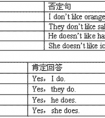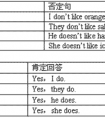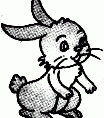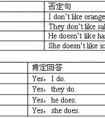按要求改写句子。1. That is a horse in English.(就画线部分提问) ____________ ____________ that in English?2. Is it a horse? (改为肯定句) ____________ _______-五年级英语
题文
| 按要求改写句子。 |
| 1. That is a horse in English. (就画线部分提问) ____________ ____________ that in English? 2. Is it a horse? (改为肯定句) ____________ ____________ a horse. 3. That is a sheep. (改为否定句) That ____________ a sheep. 4. We can call it a monkey. (改为一般疑问句) ____________ you ____________ it a monkey? 5. Do you want to be a teacher? (改为肯定句) I ____________ ____________ be a teacher. 6. Those are foals. (改为单数形式) ____________ ____________ ____________ ____________. 7. I have five apples in the bag. (就画线部分提问) ____________ ____________ ____________ ____________ you have in the bag? 8. We often sing and dance in the music club. (就画线部分提问) ____________ ____________ you often ____________ in the music club ? |
答案
| 1. What is 2. It is 3. isn't 4. Can, call 5. want to 6. That is a foal 7. How many apples do 8. What do, do |
据专家权威分析,试题“按要求改写句子。1. That is a horse in English.(就画线部分提..”主要考查你对 一般疑问句,单数名词,不定冠词(a,an),指示代词,疑问代词,系动词 等考点的理解。关于这些考点的“档案”如下:
一般疑问句单数名词不定冠词(a,an)指示代词疑问代词系动词
考点名称:一般疑问句
- 一般疑问句:
是疑问句的一种。它是以be动词,have或助动词、情态动词开头,用yes(是)或no(否)来回答的句子。
其结构是:系动词be/助动词/情态动词+主语+其他成分
一般疑问句的肯定形式为:
助动词+主语(+实义动词)。肯定答语用“yes+可定结构”。
一般疑问句的否定形式为:
助动词构成的缩写否定词+主语(+实义动词)。否定答语用“no+否定结构”。
例:
— Do you like this story-book? 你喜欢这本故事书吗?
— Yes, I do. 喜欢。/ No, I don’t. 不喜欢。
— Is he a student? 他是一名学生吗?
— Yes, he is. 是,他是。/ No, he isn’t. 不,他不是。 一般疑问句的改写:
一、含有be动词的一般疑问句,通常把be动词调到句首。例如:
陈述句:They are in the swimming pool.
一般疑问句:Are they in the swimming pool?
注意:一般疑问句句末要用“?”。
二、含有情态动词的一般疑问句(can, may...),把情态动词调到句首。例如:
陈述句:He can drive a car.
一般疑问句: Can he drive a car?
三、含有have的一般疑问句,have译为“有”。一般疑问句式有两种形式:
1.把have/has调到句首。例如:
陈述句:Tommy has a computer.
一般疑问句:Has Tommy/he a computer?
2.加助动词do/does,第三人称单数用does,其他人称用do。其句型为:Do/Does + 主语 + have...?
例如上句可变为: Does Tommy have a computer?四、一般动词的一般疑问句,也要借助助动词do/does,第三人称单数用does,其余人称用do。
其句型为:Do/Does + 主语 + 动词原形+其它?
陈述句:Amy speaks English.
一般疑问句:Does Amy speak English?一般疑问句的回答:
首先要有人称的改变。当主语为名词时,在答语中要改成其相应的代词。
另外,答语有两种,肯定的回答(用yes)和否定的回答(用no),否定式常用缩写形式。
现在还是让我们分句型一一说明。一、一般疑问句含be动词时,用be动词回答,句末用句号。例如:
-Is Mary your sister?
-Yes, she is. / No, she isn’t.(缩写)二、一般疑问句含有情态动词(can, may, should等)时,用情态动词回答。例如:
-May I come in?
-Yes, you may. / No, you can’t.三、一般疑问句含有have(译为“有”)时,有两种回答方式。
1.直接用have/has回答。
例如:
-Have they any pictures?
-Yes, they have. / No, they haven’t.
2.用助动词do/does回答。
例如:
-Does Millie smoke?
-Yes, she does. / No, she doesn’t.四、一般动词的一般疑问句回答时也用助动词。
例如:
-Do the workers live in London?
-Yes, they do. / No, they don’t.
考点名称:单数名词
单数名词:
主要用来表示“一个”东西的概念。两个及其以上就应用复数名词来描述。
例如单数可数名词:man,river,book,glass,desk,cup,road,car,eye,foot,tree,bird,girl,boy英语上名词按可数与否可分为可数名词和不可数名词。
可数名词按数目又可分为单数名词和复数名词两类。
注意:不可数名词没有复数形式,如water(水)。
考点名称:不定冠词(a,an)
不定冠词的基本用法:
(1)不定冠词有a和an两种:a用于辅音音素开头的词前,an用于元音音素开头的词前。
例如:a boy, a city, a girl, a useful animal , an old man, an honest boy, a bad apple, a tall elephant
(2) 用来表示“一”的意思,但不强调数的观念,只说明名词为不特定者。即不具体说明是何人何物。
例如:A teacher is looking for you. We work five days a week.
(3)不定冠词含有“一”的意思,但数量观念没有one强烈,在句子里边一般可以不必译出,但若有“一个”的意思则译出,
例如:An orange is good for you. 桔子对你有好处。
(4)一般用在可数名词单数前,指人或事物的某一种类。
例如:Bill is a student. This is a ruler.
(5)用在某些固定词组中。
例如:a lot of, a moment ago, a few, a little- 不定冠词的指代:
1. 首次提到的人或物。
2.指人或事物,但不具体说明何人或何物。
There are seven days in a week.We have three meals a day.
3.表示“一个”,但数的概念没有one强。
There’s a tree on the hill.He has an interesting book.
4.指某类人或事物中的任何一个。
An elephant is bigger than a horse.A car runs faster than a bike. an与a的区别:
1)a用在以辅音字母开头,或以读做辅音的元音字母开头的单词前面:
例如:a man一个男人 a university一所大学 a hat一顶帽子 a European一个欧洲人
- 最新内容
- 相关内容
- 网友推荐
- 图文推荐
| [家长教育] 孩子为什么会和父母感情疏离? (2019-07-14) |
| [教师分享] 给远方姐姐的一封信 (2018-11-07) |
| [教师分享] 伸缩门 (2018-11-07) |
| [教师分享] 回家乡 (2018-11-07) |
| [教师分享] 是风味也是人间 (2018-11-07) |
| [教师分享] 一句格言的启示 (2018-11-07) |
| [教师分享] 无规矩不成方圆 (2018-11-07) |
| [教师分享] 第十届全国教育名家论坛有感(二) (2018-11-07) |
| [教师分享] 贪玩的小狗 (2018-11-07) |
| [教师分享] 未命名文章 (2018-11-07) |





![____ it got four wheels?[ ]A. Have B. There C. Has-五年级英语](http://www.00-edu.com/d/file/ks/4/1/65/2019-08-31/small2ca0aeba76320ba6f81e40fe83a0e8111567199443.png)
